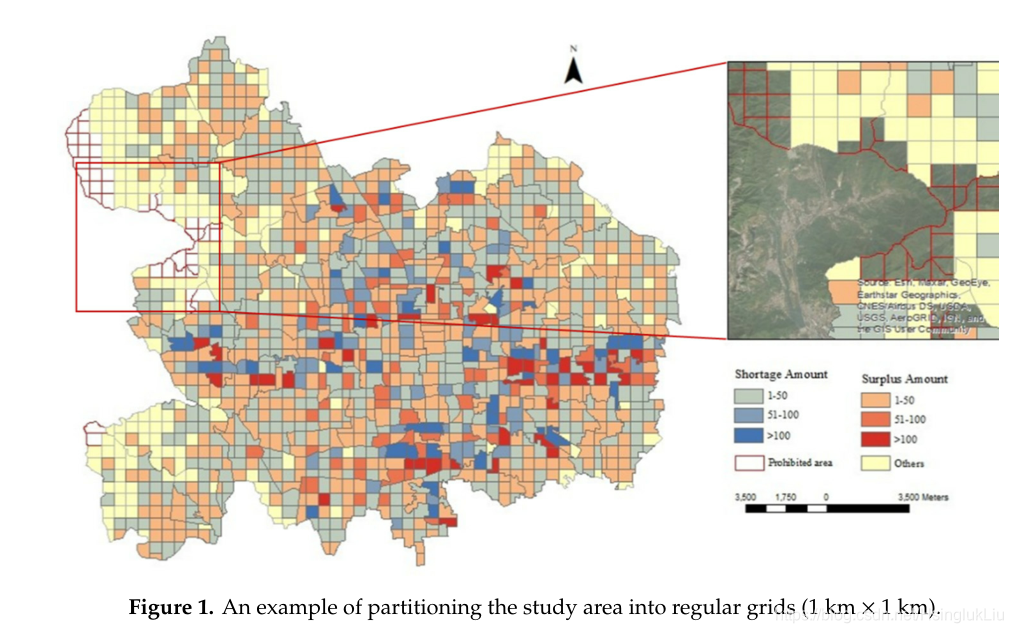rebalance in bike-sharing
Station-Free Bike Rebalancing Analysis-Scale, Modeling, and Computational Challenges
Xueting Jin and Daoqin Tong (2020). Station-Free Bike Rebalancing Analysis: Scale, Modeling, and Computational Challenges. ISPRS International Journal of Geo-Information, 9(11), 691.
Bike-Share Rebalancing Flow Model
to identify the optimal bike repositioning with the minimal overall bike repositioning distance.
The station-based bike sharing system (SBBSS) and the free-floating bike sharing system (FFBSS) have been adopted on a large scale in China. However, the overlap between the services provided by these two systems often makes bike sharing inefficient. By comparing the factors that affect the usage of the two systems, this paper aims to propose appropriate strategies to promote their coordinated development. Using data collected in Nanjing, a predictive model is built to determine which system is more suitable at a given location. The influences of infrastructure, demand distribution, and land use attributes at the station level are examined via the support vector machine (SVM) approach. Our results show that the SBBSS tends to be favored in areas where there is a high concentration of travel demand, and close proximity to metro stations and commercial properties, whereas locations with a higher density of major roads and residential properties are associated with more frequent use of the FFBSS. With regard to the methods used, a comparison of several machine learning approaches shows that the SVM has the best predictive performance. Our findings could be used to help policy makers and transportation planners to optimize the deployment and redistribution of docked and dockless bikes.
The world population will reach 9.8 billion by 2050, with increased urbanization. Cycling is one of the fastest developing sustainable transport solutions. With the spread of public bike sharing (PBS) systems, it is very important to understand the differences between systems. This article focuses on the clustering of different bike sharing systems around the world. The lack of a comprehensive database about PBS systems in the world does not allow comparing or evaluating them. Therefore, the first step was to gather data about existing systems. The existing systems could be categorized by grouping criterions, and then typical models can be defined. Our assumption was that 90% of the systems could be classified into four clusters. We used clustering techniques and statistical analysis to create these clusters. However, our estimation proved to be too optimistic, therefore, we only used four distinct clusters (public, private, mixed, other) and the results were acceptable. The analysis of the different clusters and the identification of their common features is the next step of this line of research; however, some general characteristics of the proposed clusters are described. The result is a general method that could identify the type of a PBS system.







